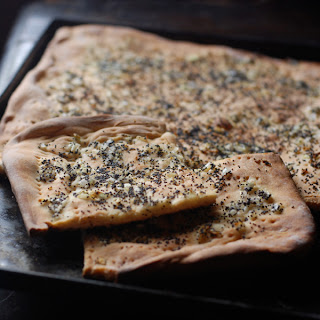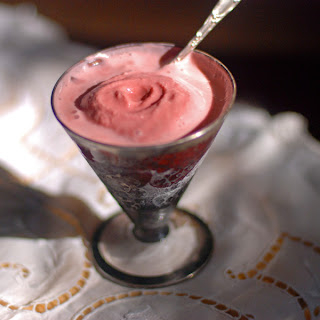I fell in love with Chas Addams books the first time I saw them in a bookstore. I was 8. This might be considered odd since the original cartoons came from the sophisticated pages of The New Yorker and were decidedly not for children but I loved them and my dear mother indulged me. Because of these books, I was never afraid of the dark, never ridiculed people who were ‘different’ and developed a very active imagination.
Halloween was THE holiday for Charles Addams. His best cartoons always took center stage on the front cover of The New Yorker’s Halloween-week edition.
 |
| Cemetery in the Snow 1817 |
What’s not to love about Halloween? The universal archetype exists across many centuries, religions and cultures. It marks the seasonal death and transfiguration of lush, ripe fields and the resplendent flame of fall leaves to barren stubble and naked spidery limbs.
In England, the Christian tradition came from the pagan celebration of Samhain (from the old Irish meaning summer’s end) where fires were lit to protect against the creeping dark and the waning of the sun god’s power but also to light the way for the dead to visit the earth. It was believed, in these days between the light and dark halves of the year, the membrane between the living and the dead was at its thinnest –– thin enough that the dead could reach out to the living.
 |
| Gozan no okuribi |
At the Irish court of Tara in the Middle Ages, a colossal blazing fire was lit to celebrate Samhain and to serve as a beacon for the departed. I remember watching a similar ceremony in Kyoto, Japan called Gozan no Okuribi (meaning send-off fire) better known as the ceremony of The Lighting of the Daimonji (meaning large or great) –- an extraordinary torchlight procession by hundreds of participants climbing up Kyoto’s mountains and creating giant fiery characters to lead the dead that had returned to visit the week before during O-bon (where they snacked on their favorite foods that their loved ones had left at their graves) back to the spirit world –– it was astonishing.
Golden cakes came into the Celtic tradition as a way to share the sun and perhaps to warm and nourish departed souls on their passage back to the spirit world.
“Soul, a soul, a soul cake,
Please good missus a soul cake.
An apple, a pear, a plum, a cherry,
Any good thing to make us all merry,
One for Peter, two for Paul, three for Him who made us all.”
I decided this was what I wanted to make for my Halloween treat. In searching for a recipe, I came upon a lovely one from Goode Cookery based on a 1604 recipe from Elinor Fettiplace's personal cookbook (that I wrote about HERE) called Elinor Fettiplace's Receipt Book: Elizabethan Country House Cooking
I made a few alterations to Gode Cookery’s interpretation, changing the proportions (after I checked with other recipes of the period that had amounts listed) and adding more butter to the mix (1 T of butter wasn’t enough). I include the cross variety and the currant ‘face'. Although not in the original recipe, rose sugar is a lovely addition. Note the rose scent dissipates once you leave the cookies out so plan your sprinkling accordingly. In the old days, they were sprinkled then put back into the oven for a moment so that the sugar “will shew like ice”.
Soul Cakes based on a recipe from Elinor Fettiplace
1/2 cup ale
1 tsp. yeast
2 ½ - 3 cups flour
1/2 cup sugar
1/4 tsp. each nutmeg, clove, & mace (taste the dough, you may want more)
1/2 tsp. saffron
¼ c currants, soaked in warm water or sherry for 1 hour (optional)
6 T sweet butter, softened
½ t salt
1/2 cup dry sherry (sack)
1 egg yolk mixed with 1 T water
2 T Demerara Sugar from Marx Foods
a few drops of Aftelier Rose essence or Rosewater (optional)
Dissolve the yeast in the ale (this makes the "ale barme" of the original recipe); set aside.
In a large bowl, combine the flour and sugar (start with 2 ½ and add the rest if needed. Make a well (a depression, or hollow area in the center of the dry ingredients) in the flour/sugar mixture and pour in the “ale barme”. Leave these ingredients unmixed so that the ale barme may proof.
In a separate bowl, cream the butter and the spices. Warm the sherry (you can use some of the sherry from plumping the currants) and let the saffron steep for a few minutes.
In the large bowl, cover the ale barm with some of the flour/sugar mixture, then add the creamed butter, spices, & sack, and with a large spoon, begin gently blending until the mixture resembles coarse, wet sand. Finish the blending process with your hands, kneading in the bowl until it forms a ball of dough. The finished product needs to be smooth & elastic, and soft but not sticky. Add more flour if the dough is too wet; add more sack if too dry. You can add all the currants to the dough and just make crosses or leave a few tablespoons out of the dough and make your ‘faces’ or skip the currants entirely.
Roll this dough out onto a floured surface till about 1/4-1/3” thick. Use a lightly floured cutter to make the cakes. (The earliest references to Soul Cakes describe them as flat & oval—I have seen them round as well). Place on a baking sheet lined with parchment paper. Let them rest for 5-10 minutes in a warm spot (if you want them puffier, let them rise, covered, for 1 hour).
Bake at 375º F for 15 minutes. Remove and brush with egg yolk and return to oven for 10-15 more minutes until cooked through. Remove from oven and when still hot, sprinkle a little Demerara sugar on the top of each cake (you can toss the sugar with the rose 1st, if you would like -- as it would have been done in the 16th century). Let cool on a wire rack; serve. Makes approx. 2 dozen small cakes. They have a texture somewhere between a pizza crust and an animal cracker.
From The Closet of Kenhelm Digby of 1669 (he was the father of the modern wine bottle):
From The Closet of Kenhelm Digby of 1669 (he was the father of the modern wine bottle):
































 Get rose essence here:
Get rose essence here: 











